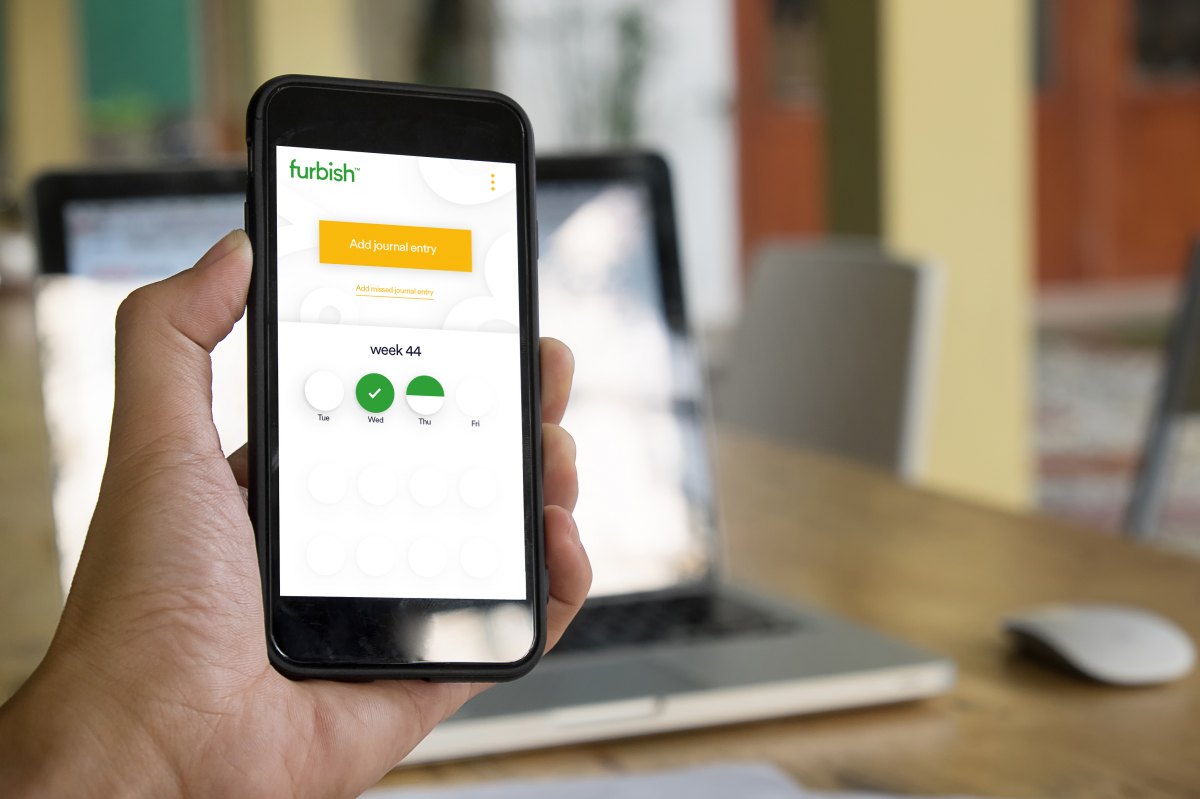Furbish extracts the Office-DNA for better workspaces

Among the start-ups supported by BTA, Furbish focuses on next generation workspaces. Ulrike Rahe and Holger Wallbaum, founders of Furbish tell more about their philosophy, their approach and the future of office buildings.
What is wrong with office buildings today?
Ulrike Rahe: Generally speaking, you can’t say that office buildings are full of mistakes, that would be false. But our Studies show that in a bad office environment, employees are often uninspired and prone to sickness. This has to do with everything from interior design to bad indoor environmental quality. Most of the investments are not focusing the use-phase of buildings. By scientific insight into the specific work-patterns of an organisation, we get different data and we can obtain much more interesting results in terms of health, comfort, happiness at work, productivity as well as energy and CO2 savings.
Dr. Holger Wallbaum: Office buildings are the second largest CO2 emitting type of building in Europe, they still represent about 45% of the CO2 emitted by European building stock. Although we see improvements in the new construction of green buildings that are designed to be sustainable, even those buildings do not fulfil the expectations of the owner and occupants because the specific user demand, the diverse user behavior is not properly taken into account.
That’s why we promote a holistic and scientific approach of these very diverse buildings. In order to do that, you need to decode each building’s Office-DNA.
What is the Office-DNA and how do you decode it?
Dr. Holger Wallbaum: It expresses what Furbish does. We study the demands and working patterns of the future office users in depth – this we call the “DNA” of an office. And like our human DNA, the Office-DNA is very heterogenous. Sometimes, we take the existing offices and their occupants as point of departure or we anticipate a future occupant profile for a new construction. We decode the occupants’ routines, especially their working patterns, through interviews, questionnaires, observations and thanks to a mobile phone application provided to the users. Those tools allows us to much better understand users movements in an office – which parts are frequently used, which areas are hardly occupied. After the “decoding”, we can make recommendations based on our analysis to optimize office buildings, the workspaces including the building systems such as lighting, HVAC etc.
Ulrike Rahe: Traditionally, office design follows a linear process where office spaces are supposed to meet specific needs of unknown tenants, who are to fit to the new facilities and not vice versa. This is like to put the cart before the horse. Extracting the Office-DNA as Furbish does, requires a complex methodology combining layers of different scientific methods. The study demands very little time from the clients but can take a couple of months for our team to analyse the result. At the end of our study process, we deliver a thorough report based on our cross-analysis, and clear recommendations that are understandable for our clients and that can be directly applied in re-design, refurbishment or reconstruction.
Dr. Holger Wallbaum: We capitalize on these analysis by feeding them into our unique database. With already 30 projects we worked on, we can see recurring patterns, often linked to climate zones and social-cultural setups, but not only. These recurring patterns can help us decode some projects faster, especially in the case of new constructions.

Who do you work for and who do you work with?
Ulrike Rahe: Mostly, we work for Real Estate owners and developers, along with companies and public organisations who need or want to recreate their workspaces to make them fit their daily business and to save costs. Depending on the contract, we either do a punctual study and deliver our recommendations to the architect, or we partner with the Real Estate owner to follow through the whole project. With evolving technologies and new usages, the patterns we primarily identified will evolve accordingly, which our continuous follow up evaluation demonstrates to flexibly adapt the environment over time.
Dr. Holger Wallbaum: Our in-house competences make our company as unique as our approach. Our interdisciplinary team consists of industrial designers, architects, a psychologist and different kinds of engineers. With these skills combined, we can have a rather decent holistic approach. Nevertheless, we do collaborate with strategic business partners in some projects such as architecture firms, furniture providers, and real estate companies.
What are the main obstacles you face?
Dr. Holger Wallbaum: The first issue are often existing relationships: Building owners tend to stick to their existing collaborators and their already known perspectives on how to make better workplaces. It’s hard to approach them and to convince them to change old habits and routines.
The second issue is public procurement. This sometimes slows down or hinders innovation.
Ulrike Rahe: There is normally also a resistance to overcome among the employees. They are prone to fear change, they have some sort of conservatism in regards of their habits, their own comfort. The first steps of our approach are designed to guide them out of their comfort zone. It’s our icebreaker to lay the seeds for a productive collaboration and co-creation together with them.
As for Real Estate developers, we always need to find good arguments for them. Because ultimately, the benefits of healthier, more productive workspaces are not in their main focus. Increased productivity benefits their tenant. But as soon as they understand that we’ll help them to optimize their surface usage and give them access to the latest research, they see the USP in this head-start on developing future working environments.
How does the Office-DNA approach fit with the new fancy workspaces we see flourish?
Dr. Holger Wallbaum: When we see some of the hot desks or Google offices, we wish we had been there to help. We definitely fit with those “fancy” visions of workspaces, but as they are designed, we can already detect some issues. Extraordinary creative spaces can generate a lot of disturbances, especially acoustic ones. Same with hot desks, the constant circulation can be annoying. Those are issues that can be solved easily if thought through carefully in the design process. There is emotion and good will in that kind of workspaces, but with an Office-DNA approach, they could even be way better.
Ulrike Rahe: People tend to separate fancy workspaces and optimized workspaces, which are not at all contradictory when based on deep insights and knowledge! Companies often want to create a landmark for their headquarters, which I can understand pretty well. We know that architectonic quality is highly appreciated by the employees, which has a direct influence on their loyalty and performance. But office designs that expose staff to disturbances such as sound, glare, proximity, are neglecting needs and demands of the employees when carrying out their tasks. This is just be bad and never fancy.
How does BTA support you?
Dr. Holger Wallbaum: BTA helps us on many levels, the first being Public Relationships. This is key for us and we appreciate their assistance in that field. Second, even though Ulrike and I are academics, we are used to running a business, but BTA’s support on that regard has been very helpful. With them we walked the path from innovation to a demonstration project. BTA also offers a lot of business and partnership opportunities, encounters with other “players” of the sector across Europe.
Where have you intervened and what are the countries you’re aiming at next?
Dr. Holger Wallbaum: We tested our approach first in Switzerland, then we adapted it to Sweden and its climate. That’s where our main market is now. We had the chance to collaborate with our Climate-KIC partners in in Valencia, Spain, which raised the challenge to adapt our methods to hotter climate zones. Working in other countries is always a challenge, not only in terms of climates, but also in terms of social-cultural habits, building codes etc. We are ready to work anywhere in Europe now or even in North America since the market and demand is really large.




